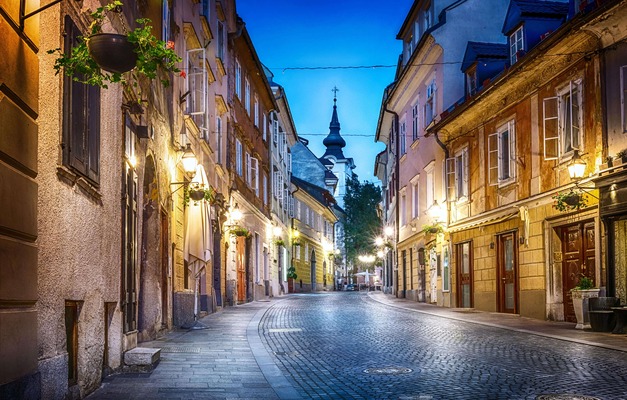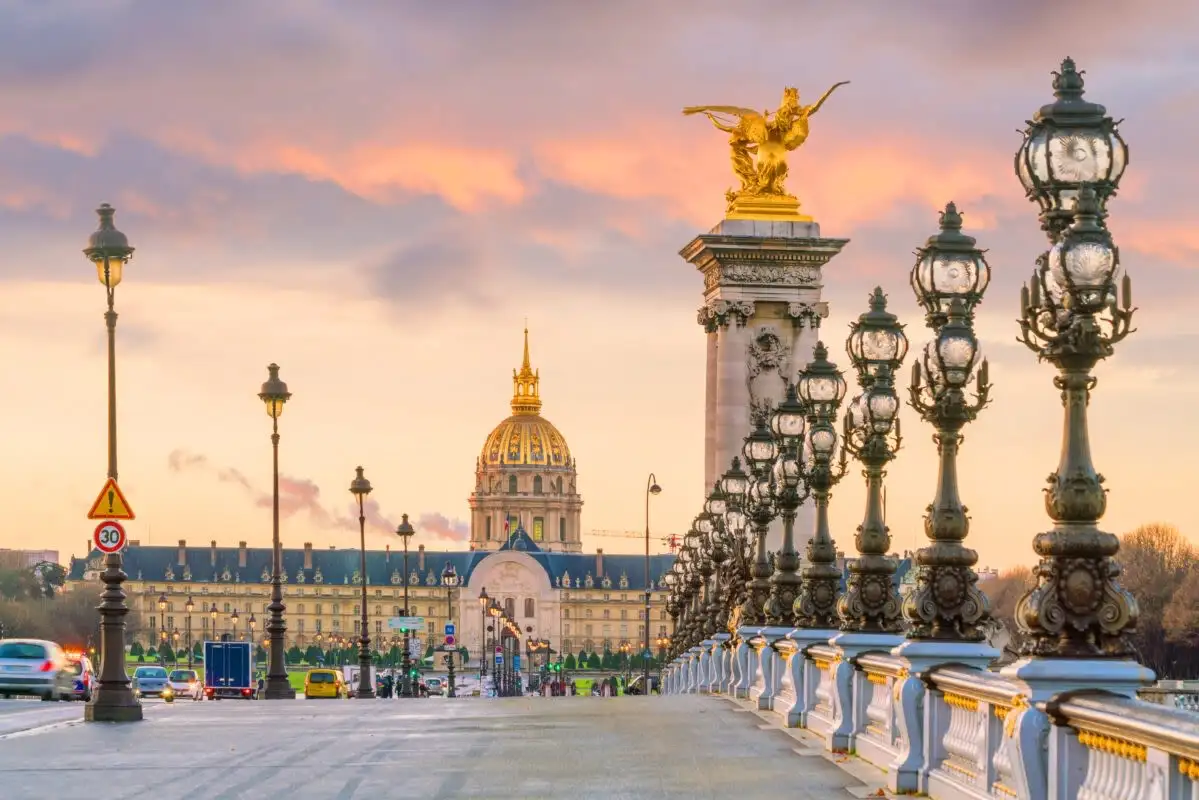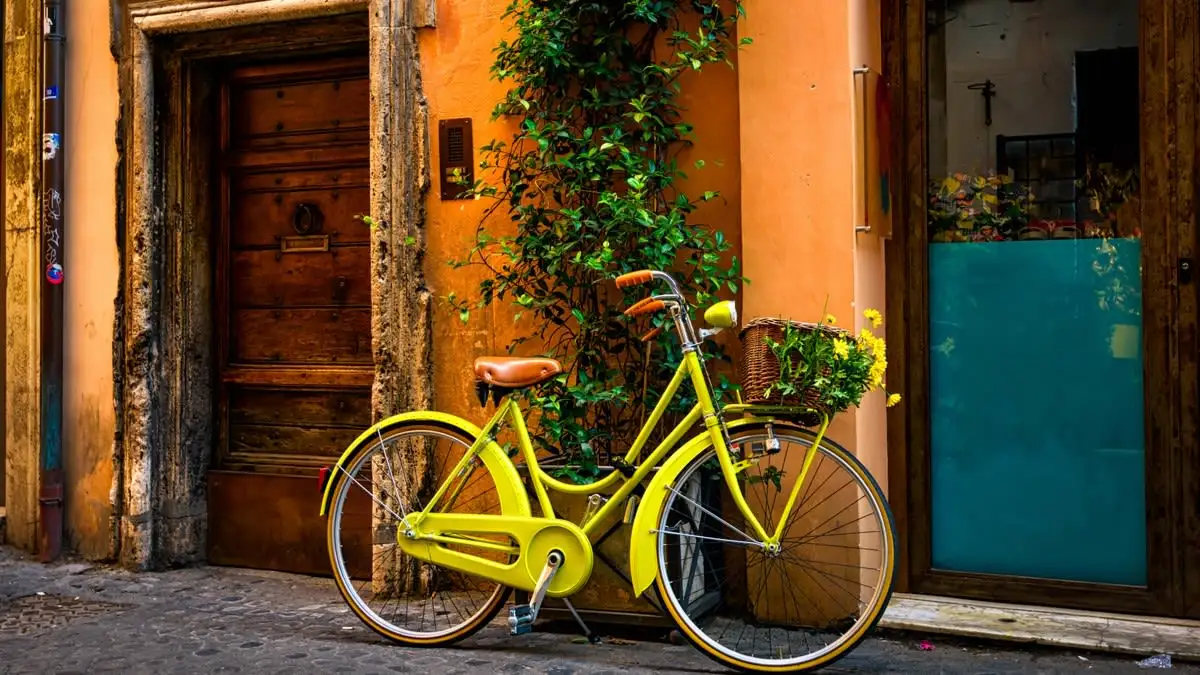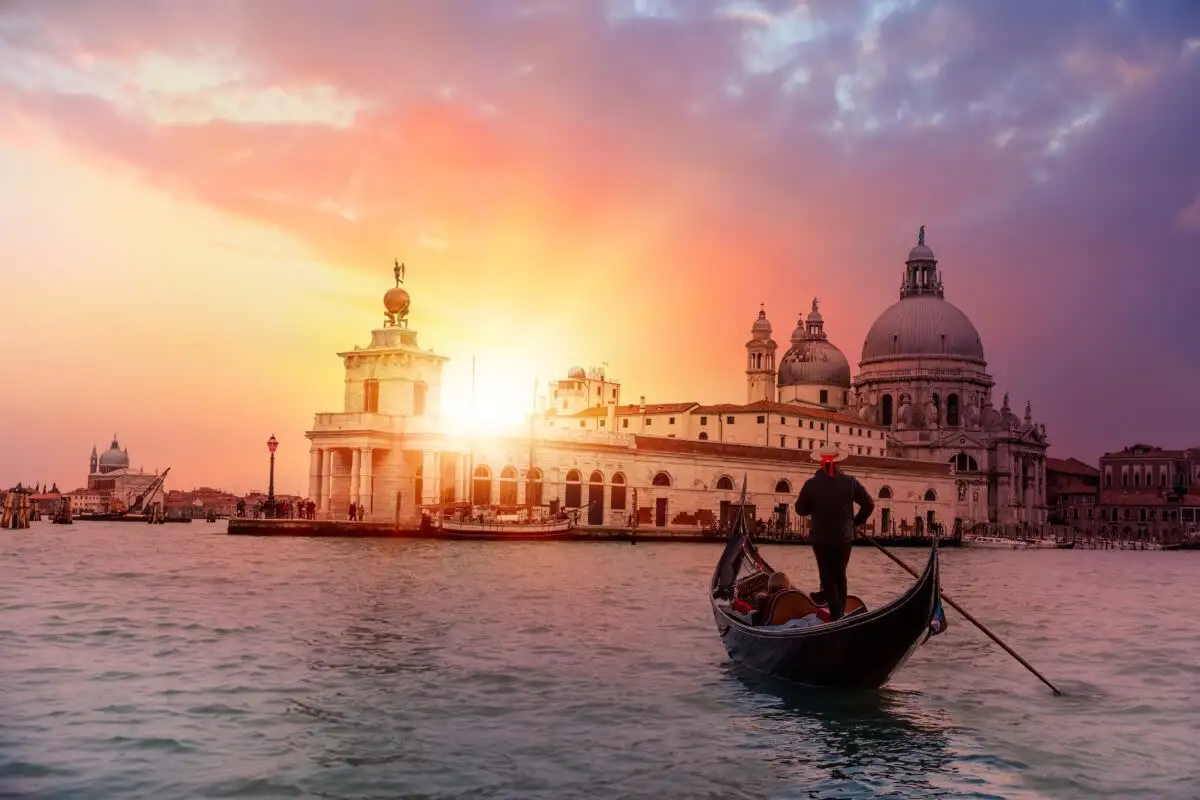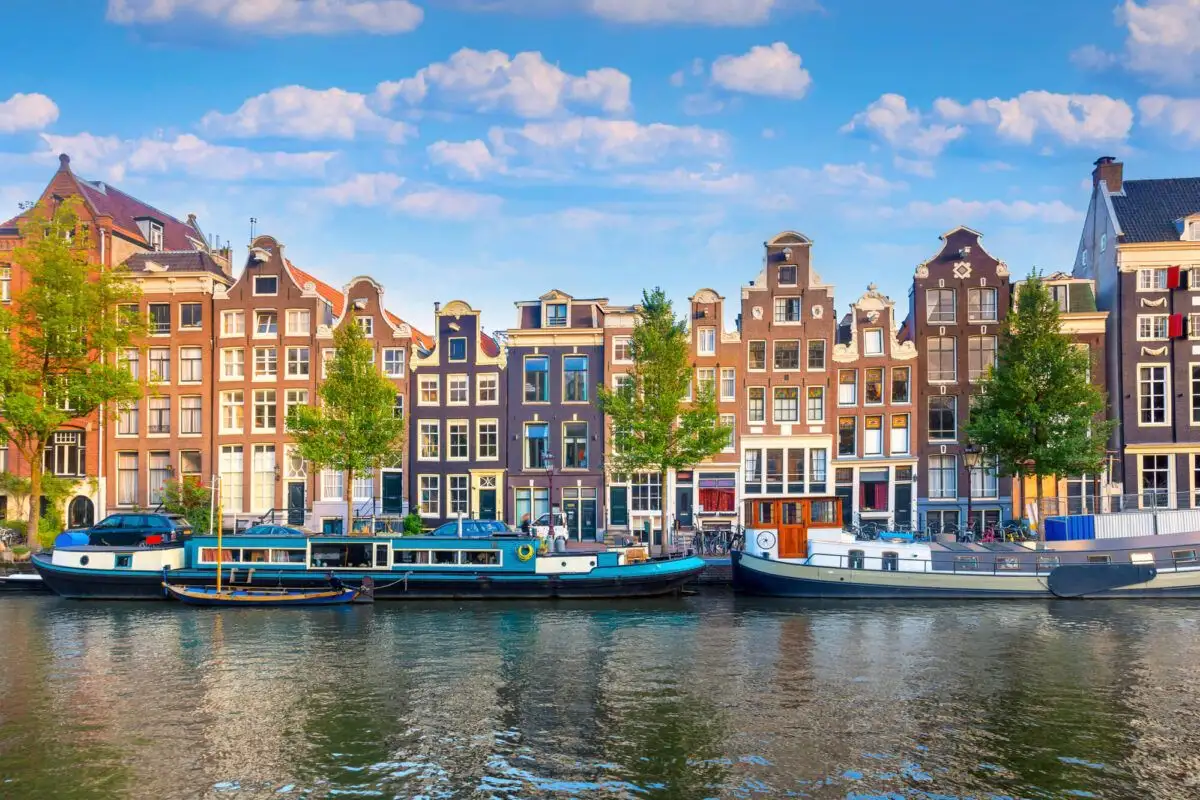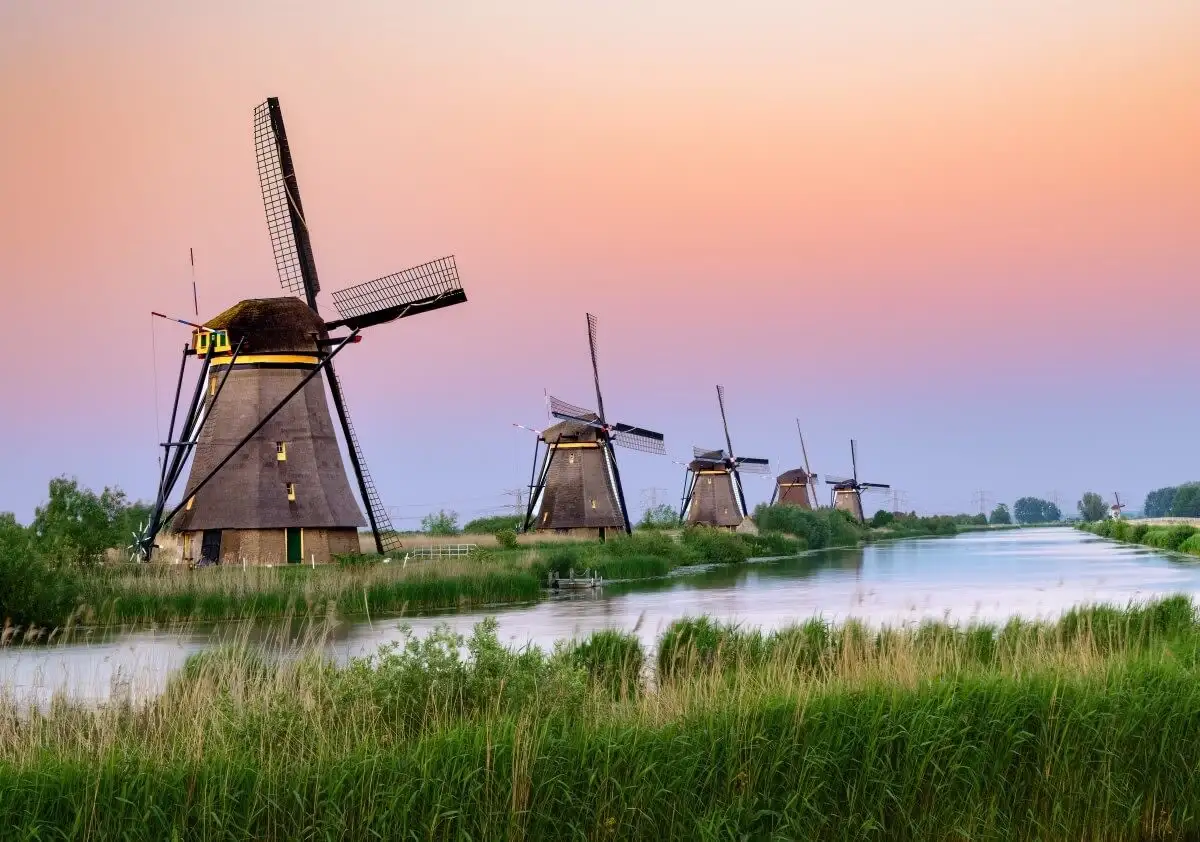
A Journey Through Culture and Time in Paris, Amsterdam, and Germany
 10 Day Tour of Paris, Amsterdam, Cologne and Munich
10 Day Tour of Paris, Amsterdam, Cologne and Munich
Overview
Trip Map
Itinerary
Inclusions
Reviews
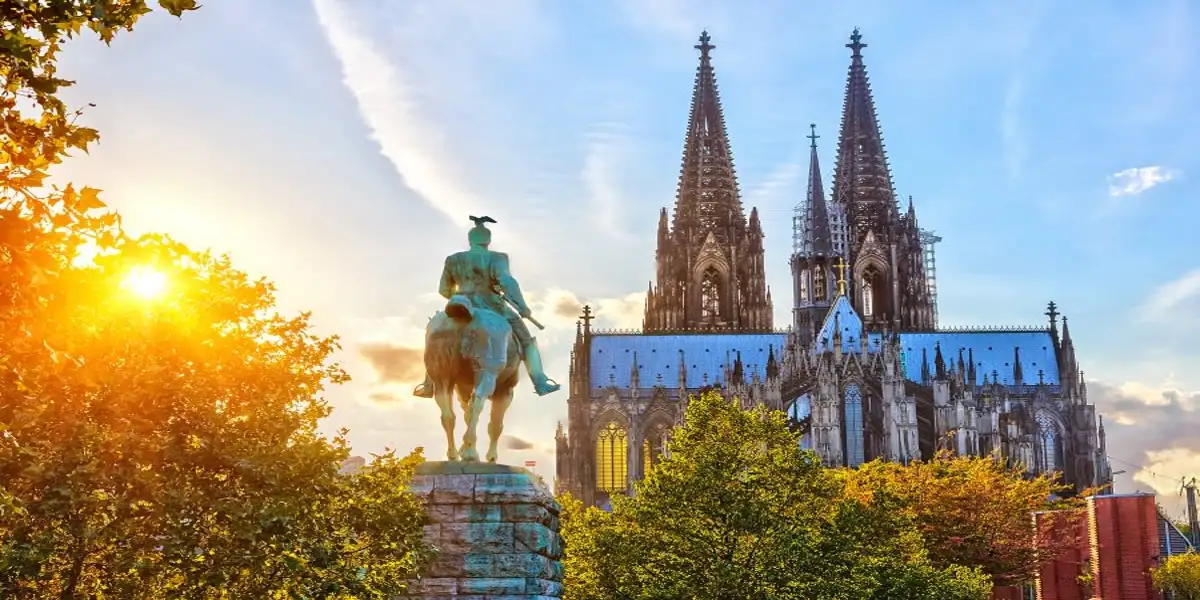
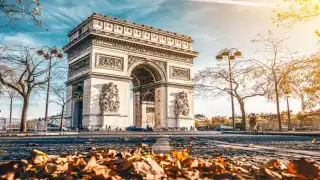
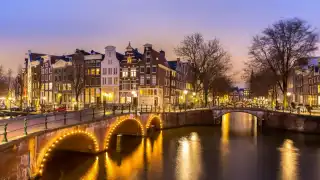




10 Days 9 Nights
Best Time: Jan-Dec
History Buffs
Cultural Exploration
Enjoy elegance, beauty, and charm in some of Europe's most beloved cities on a 10-day journey that weaves through Paris, Amsterdam, Cologne, and Munich. Including private guided tours in each city, this trip promises an intimate exploration of culture and history, augmented by the detailed itinerary guidance provided in our mobile app. From the artistic splendors of Paris to the charming canals of Amsterdam, the rich history of Cologne, and Munich's medieval streets, you'll experience many of Europe's finest attractions without worrying about the hassles or logistics.
- Ascend the Eiffel Tower for unmatched views of Paris and let the charm of Montmartre captivate you.
- Witness the elegance & opulence of Versailles, once home to French royals such as Marie Antoinette.
- Cruise through Amsterdam's canal-laced cityscape and take in the historic beauty of the waterways.
- Explore Cologne's Altstadt & cathedral, and take a day trip to Bonn, the former West German capital.
- Get a local's perspective on a private guided tour through the storied lanes Munich's Old Town.
Enjoy elegance, beauty, and charm in some of Europe's most beloved cities on a 10-day journey that weaves through Paris, Amsterdam, Cologne, and Munich. Including private guided tours in each city, this trip promises an intimate exploration of culture and history, augmented by the detailed itinerary guidance provided in our mobile app. From the artistic splendors of Paris to the charming canals of Amsterdam, the rich history of Cologne, and Munich's medieval streets, you'll experience many of Europe's finest attractions without worrying about the hassles or logistics.
- Ascend the Eiffel Tower for unmatched views of Paris and let the charm of Montmartre captivate you.
- Witness the elegance & opulence of Versailles, once home to French royals such as Marie Antoinette.
- Cruise through Amsterdam's canal-laced cityscape and take in the historic beauty of the waterways.
- Explore Cologne's Altstadt & cathedral, and take a day trip to Bonn, the former West German capital.
- Get a local's perspective on a private guided tour through the storied lanes Munich's Old Town.

Eiffel Tower
Historic Landmarks

Louvre Museum
Museums & Galleries

Arc de Triomphe
Architecture

Old Town
Historic Landmarks

Anne Frank House
Historic Landmarks

Cologne Cathedral
UNESCO World Heritage

Hohenzollern Bridge
Architecture

Old Town
Architecture

Residence Palace
Castles & Chateaux
Must see sights

Eiffel Tower
Historic Landmarks

Louvre Museum
Museums & Galleries

Arc de Triomphe
Architecture

Old Town
Historic Landmarks

Anne Frank House
Historic Landmarks

Cologne Cathedral
UNESCO World Heritage

Hohenzollern Bridge
Architecture

Old Town
Architecture

Residence Palace
Castles & Chateaux
Starting from
$3099
per person
 Not included
Not included Secure Your Customizable Trip
Enter your details to embark on a journey that can be tailored just for you.
Start
Travelers
0 travelers
Add Room
Remove Room
Preferred Hotel Stars
Select Hotel Stars
Craft Your Own Itinerary
Select your interests and destinations for a trip plan inspired by you.
Western European Highlights Trip - Map & Itinerary
Enable/Disable Map Scrolling
Click To Make Map Interactive

Western European Highlights Trip Timeline
 Edit Details
Edit DetailsArrival
3 nights
Paris
France
Train: 3.5h
2 nights
Amsterdam
Netherlands
Train: 2.5h
2 nights
Cologne
Germany
Train: 4.5h
2 nights
Munich
Germany
Departure
Day-By-Day Itinerary of Western European Highlights Trip
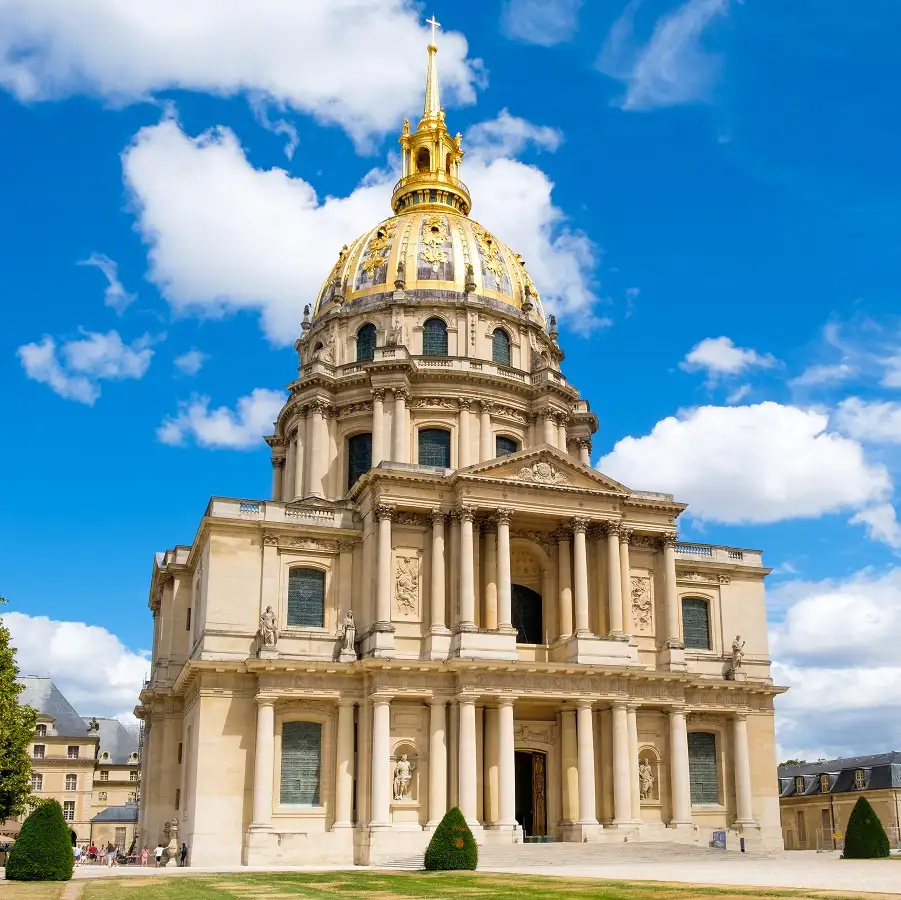
Day 1
Arrive Paris
Day 1
Arrive Paris




To Be Determined
Airport Taxi Pick-Up
Upon arrival at one of Paris's Charles de Gaulle or Orly Airports, it's fairly easy to catch a taxi from outside the main terminal building to your hotel. This is cheaper than a pre-arranged private transfer, although that option is also available if you wish - just ask your consultant. Parisien taxi drivers are generally reliable and honest, but we will provide you with instructions on how to avoid possible scammers and charlatans. If you want to save money, and often quite a lot of time as well, we will also give you alternative instructions on taking public transport into the city center. Details are contained in the full itinerary and mobile app available to our travelers. If on the other hand, you are arriving at Paris's third airport, Beauvais Airport (BVA), then you should always take the shuttle bus. The taxi fare might cost more than the flight - it's nearly 50 miles (75km) outside the city.

Day 1
Arrive Paris


Day 1
Arrive Paris





To Be Determined:
Airport Taxi Pick-Up
Mid-Day/Afternoon:
Hôtel des Invalides
Late Afternoon:
Tuileries Gardens & Nearby Museums
Early Evening:
Arc de Triomphe


Day 2
Paris
Day 2
Paris




9:00 AM - 1:00 PM
Paris Highlights Walking Tour
Embark on a captivating 4-hour walking tour of the center of Paris, the City of Lights, where history and modernity blend seamlessly along its enchanting streets. Starting from your accommodation, you will explore the heart of this dynamic city and learn how to navigate Paris as a local.

Day 2
Paris


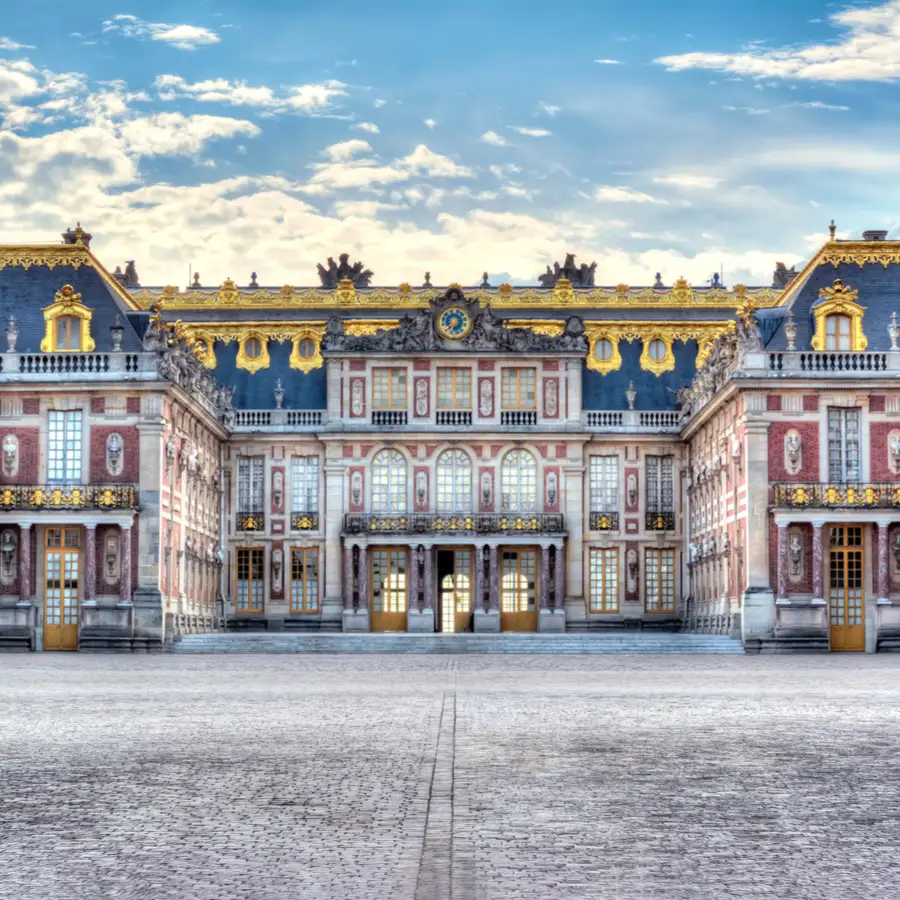
Day 3
Paris
Day 3
Paris




Early Morning to Mid-Day
Palace of Versailles
The Château of Versailles, a symbol of the grandeur of French monarchy, invites visitors to explore its lavish history and architectural majesty. From the spellbinding elegance of the Hall of Mirrors, where the Treaty of Versailles was signed, to the vast, meticulously manicured Gardens the pinnacle of French garden design, every corner tells a story of opulence and power. Discover the intimate escapes of royalty at the Grand and Petit Trianon, and marvel at the divine beauty of the Royal Chapel, a masterpiece of Baroque architecture.

The Queen's Hamlet
Imagine living like the "peasants" here?
Show More

Parc de Versailles
Feel like a king, feel like a queen, hopefully you'll feel good looking out across the park
Show More

Main Palace of Versailles
There are palaces, and then there is Versailles...
Show More

The Queen's Hamlet
Imagine living like the "peasants" here?
Show More

Parc de Versailles
Feel like a king, feel like a queen, hopefully you'll feel good looking out across the park
Show More

Main Palace of Versailles
There are palaces, and then there is Versailles...
Show More

The Queen's Hamlet
Imagine living like the "peasants" here?
Show More
prev
next

Day 3
Paris

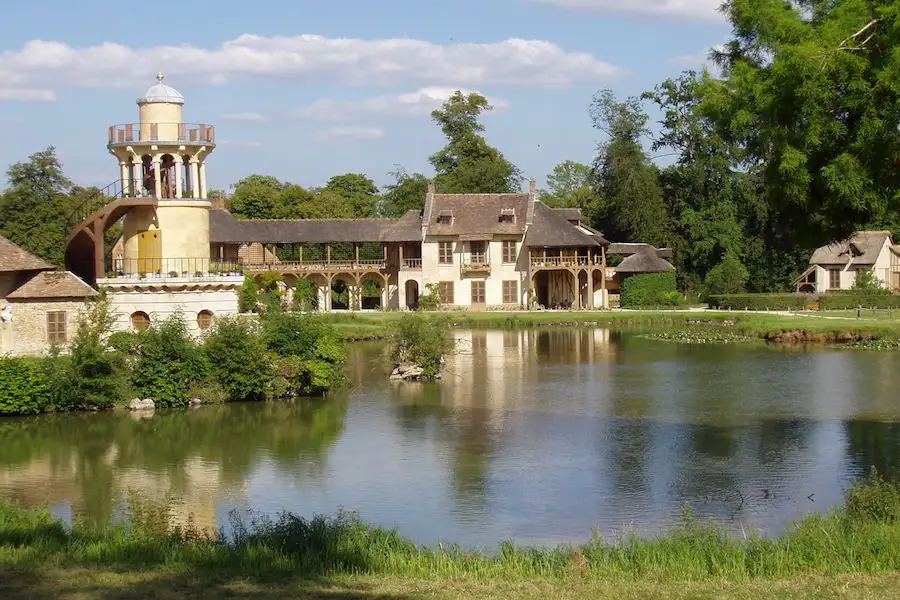
The Queen's Hamlet
 Highlight of Palace of Versailles
Highlight of Palace of VersaillesImagine living like the "peasants" here?
Desiring something different, Queen Marie Antoinette had a hamlet erected where she could supervise servants milking cows, tending pigs, collecting eggs from chickens. She dressed down to play her part, but apparently never got her hands dirty, as far as we know. Her peasant cottage only had two living rooms, a billiard room, a dining hall, and a library. If you are accustomed to palaces, only two living rooms is roughing it. Lest the queen got tired of it all, she could return to the Petit Trianon, a beautiful chateau built on the grounds of the Grand Trianon, which was the retreat chateau built on the grounds of the Palace of Versailles, which was a retreat from the Louvre Palace in Paris.
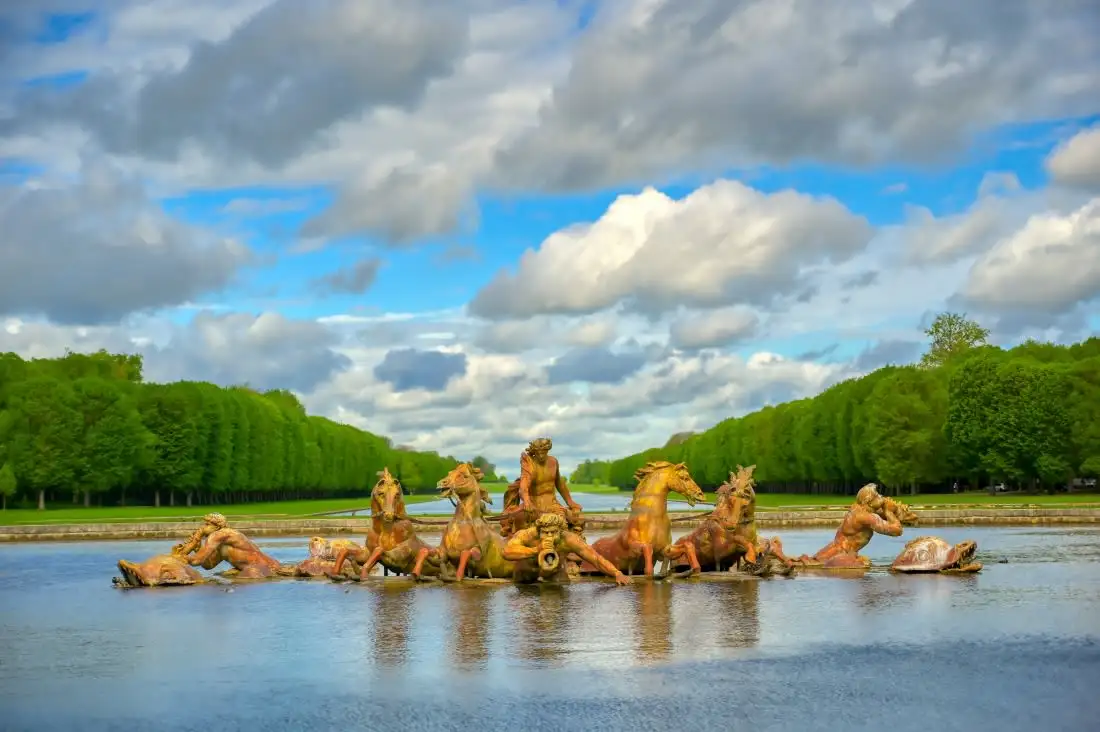
Parc de Versailles
 Highlight of Palace of Versailles
Highlight of Palace of VersaillesFeel like a king, feel like a queen, hopefully you'll feel good looking out across the park
The Parc de Versailles, features some 800 hectares of manicured lawns, stunning fountains, and the Grand Canal, all masterminded by André Le Nôtre. Highlights include the Neptune and Apollo Fountains, the Trianon Palaces, and the Queen's Hamlet. This vast garden symbolizes royal power, but you are welcomed to enjoy yourself on these pleasure grounds.
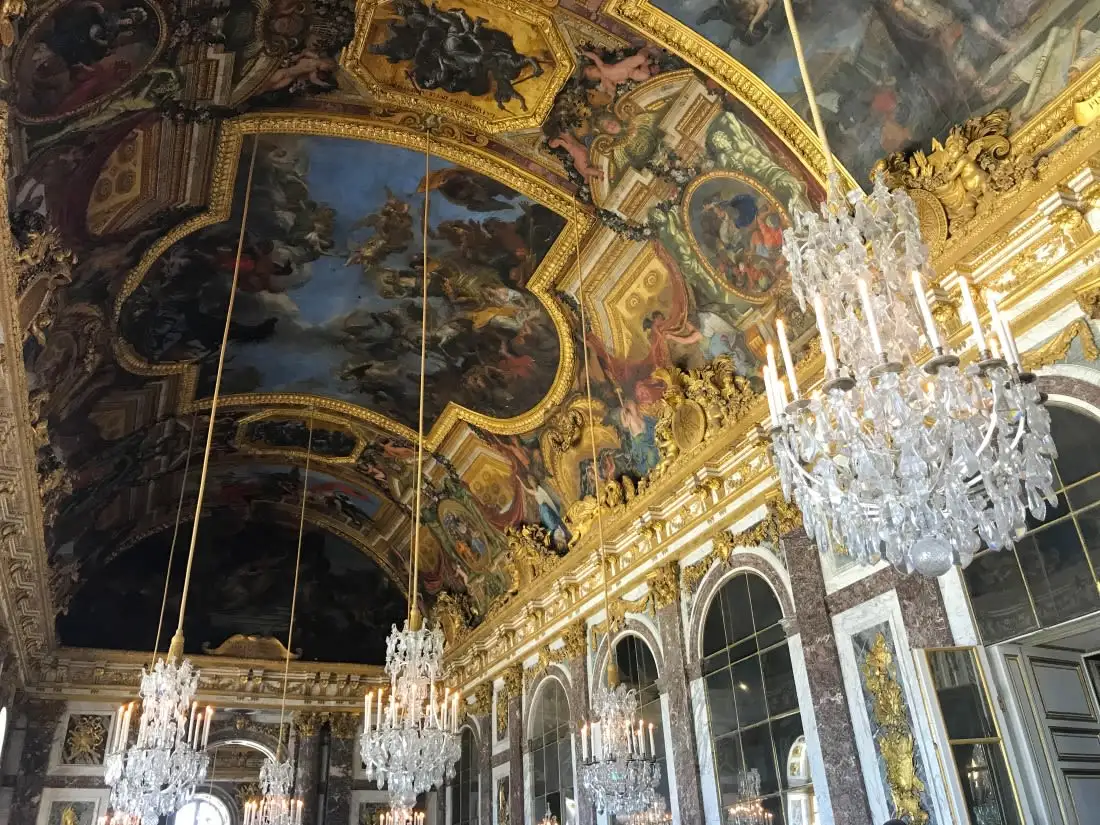
Main Palace of Versailles
 Highlight of Palace of Versailles
Highlight of Palace of VersaillesThere are palaces, and then there is Versailles...
Enlarged by for Emperor Louis XIV as an escape from the dreary political tension of Paris, Versailles might have been the most luxurious palace in the world. Even now, the building stuptifies with its grandeur and elegance, a stunning representation of the French monarchy's opulence. The famous Hall of Mirrors is just one of many, many (2300!) stunning rooms, only a small percentage of which are open for display. It might be too much, or one visit might never be enough.

The Queen's Hamlet
 Highlight of Palace of Versailles
Highlight of Palace of VersaillesImagine living like the "peasants" here?
Desiring something different, Queen Marie Antoinette had a hamlet erected where she could supervise servants milking cows, tending pigs, collecting eggs from chickens. She dressed down to play her part, but apparently never got her hands dirty, as far as we know. Her peasant cottage only had two living rooms, a billiard room, a dining hall, and a library. If you are accustomed to palaces, only two living rooms is roughing it. Lest the queen got tired of it all, she could return to the Petit Trianon, a beautiful chateau built on the grounds of the Grand Trianon, which was the retreat chateau built on the grounds of the Palace of Versailles, which was a retreat from the Louvre Palace in Paris.

Parc de Versailles
 Highlight of Palace of Versailles
Highlight of Palace of VersaillesFeel like a king, feel like a queen, hopefully you'll feel good looking out across the park
The Parc de Versailles, features some 800 hectares of manicured lawns, stunning fountains, and the Grand Canal, all masterminded by André Le Nôtre. Highlights include the Neptune and Apollo Fountains, the Trianon Palaces, and the Queen's Hamlet. This vast garden symbolizes royal power, but you are welcomed to enjoy yourself on these pleasure grounds.

Main Palace of Versailles
 Highlight of Palace of Versailles
Highlight of Palace of VersaillesThere are palaces, and then there is Versailles...
Enlarged by for Emperor Louis XIV as an escape from the dreary political tension of Paris, Versailles might have been the most luxurious palace in the world. Even now, the building stuptifies with its grandeur and elegance, a stunning representation of the French monarchy's opulence. The famous Hall of Mirrors is just one of many, many (2300!) stunning rooms, only a small percentage of which are open for display. It might be too much, or one visit might never be enough.

The Queen's Hamlet
 Highlight of Palace of Versailles
Highlight of Palace of VersaillesImagine living like the "peasants" here?
Desiring something different, Queen Marie Antoinette had a hamlet erected where she could supervise servants milking cows, tending pigs, collecting eggs from chickens. She dressed down to play her part, but apparently never got her hands dirty, as far as we know. Her peasant cottage only had two living rooms, a billiard room, a dining hall, and a library. If you are accustomed to palaces, only two living rooms is roughing it. Lest the queen got tired of it all, she could return to the Petit Trianon, a beautiful chateau built on the grounds of the Grand Trianon, which was the retreat chateau built on the grounds of the Palace of Versailles, which was a retreat from the Louvre Palace in Paris.
prev
next

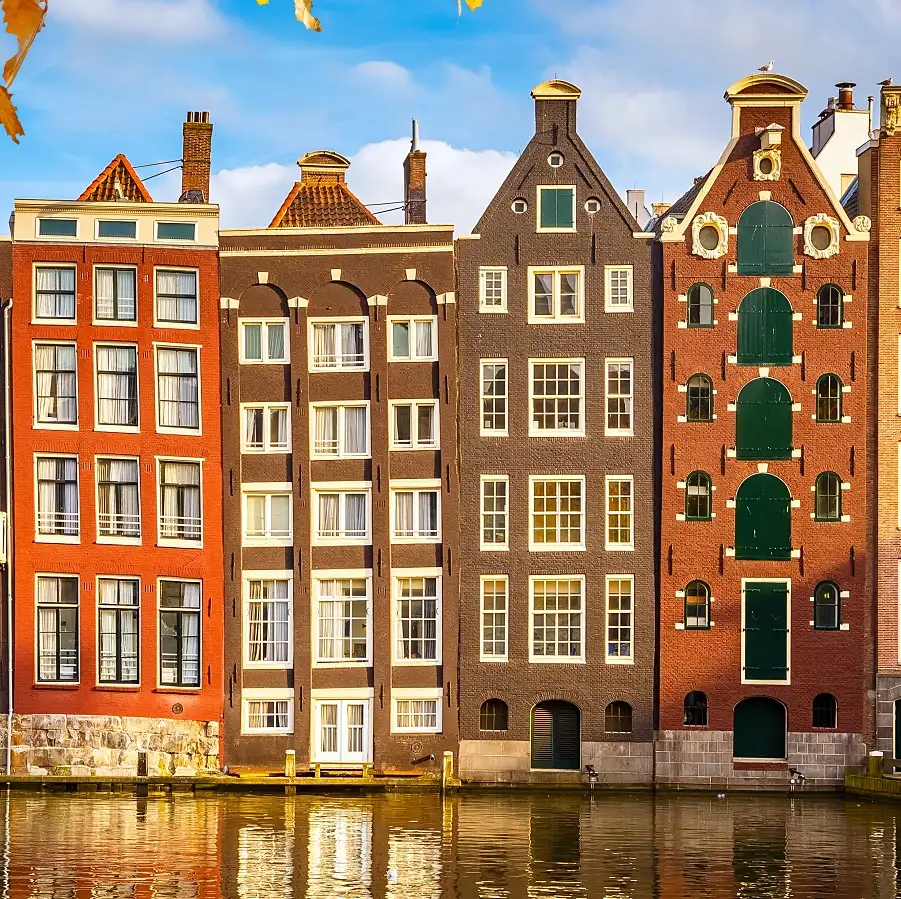
Day 4
Paris to Amsterdam
Day 4
Paris to Amsterdam





To Be Determined
Rail Drop-Off by Taxi

Day 4
Paris to Amsterdam



Day 5
Amsterdam
Day 5
Amsterdam



9:30 AM - 1:30 PM
Highlights Walking Tour
Enjoy an introduction to Amsterdam with this 4-hour private guided walking tour. After picking you up from your hotel, your professional guide will lead you past many of the city's highlights, including its center, as well as the Jordaan, the Grachtengordel, and the infamous Red-Light District. The guide will explain how all these feature in the city's history and contemporary life. Your guide will be happy to share some great tips for the rest of your stay.

Day 5
Amsterdam


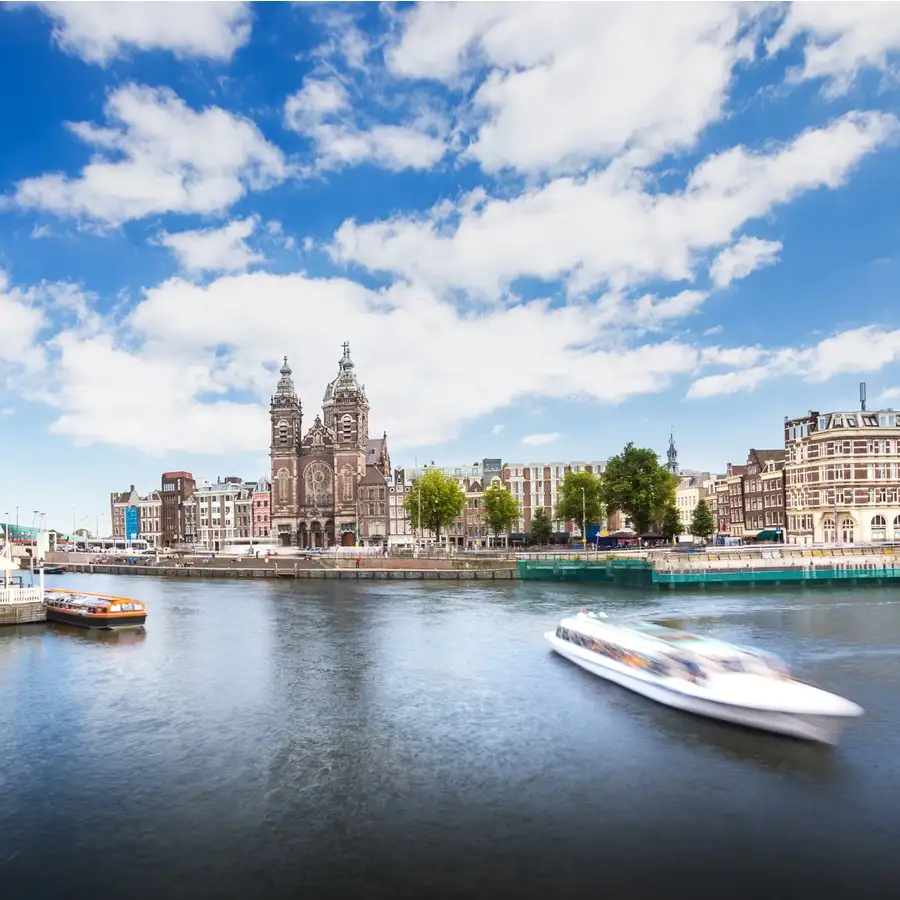
Day 6
Amsterdam to Cologne
Day 6
Amsterdam to Cologne






10:00 AM - 11:00 AM
Canal Cruise
A canal cruise is one of the best ways to discover Amsterdam! A 1-hour tour includes many of Amsterdam's most famous monuments and memorials. Starting from the dock near the Anne Frank House, you will float along the impressive Unesco Heritage Golden Age canals of Amsterdam, and pass the Jordaan neighborhood known for its famous Prinsengracht (Princes' Canal). Spy the romantic Magere Brug, the Amstel river, the 7 bridges, and the important Golden Bend before returning to land.

Day 6
Amsterdam to Cologne


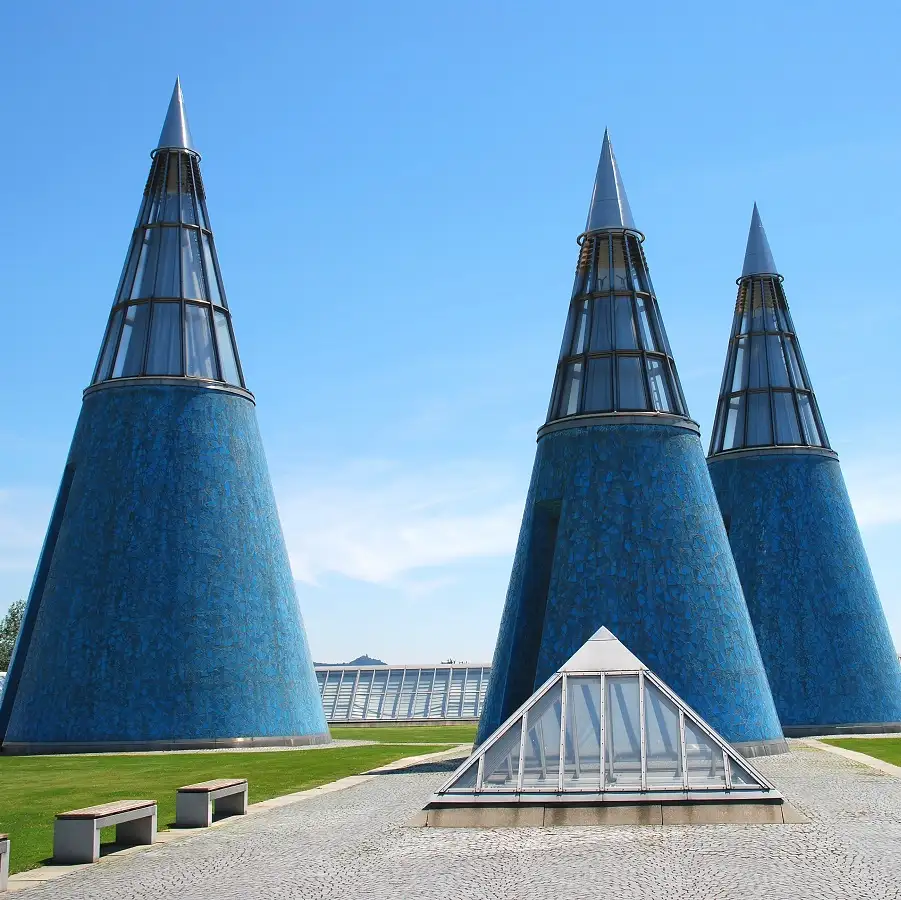
Day 7
Cologne
Day 7
Cologne



Morning/Mid-Day
Bonn Excursion
Take a less than half hour train ride to what was until the fall of the Berlin Wall the capital of the Federal Republic of Germany (West Germany). Bonn has reverted back to provincial status, but plenty remains to see of its former capital status, including the modern government district and a general spread of fascinating museums, all located near a very attractive stretch of the Rhine River. The city also makes the most of its associations with Beethoven, who was born here and whose birthplace has been turned into a museum also. You can also embark upon the Weg der Demokratie ("Path of Democracy"), a signposted walkthrough of sites associated with Bonn's period as the federal capital.

Haus der Geschichte
Take a trip back into the recent past and learn about the old West Germany.
Show More
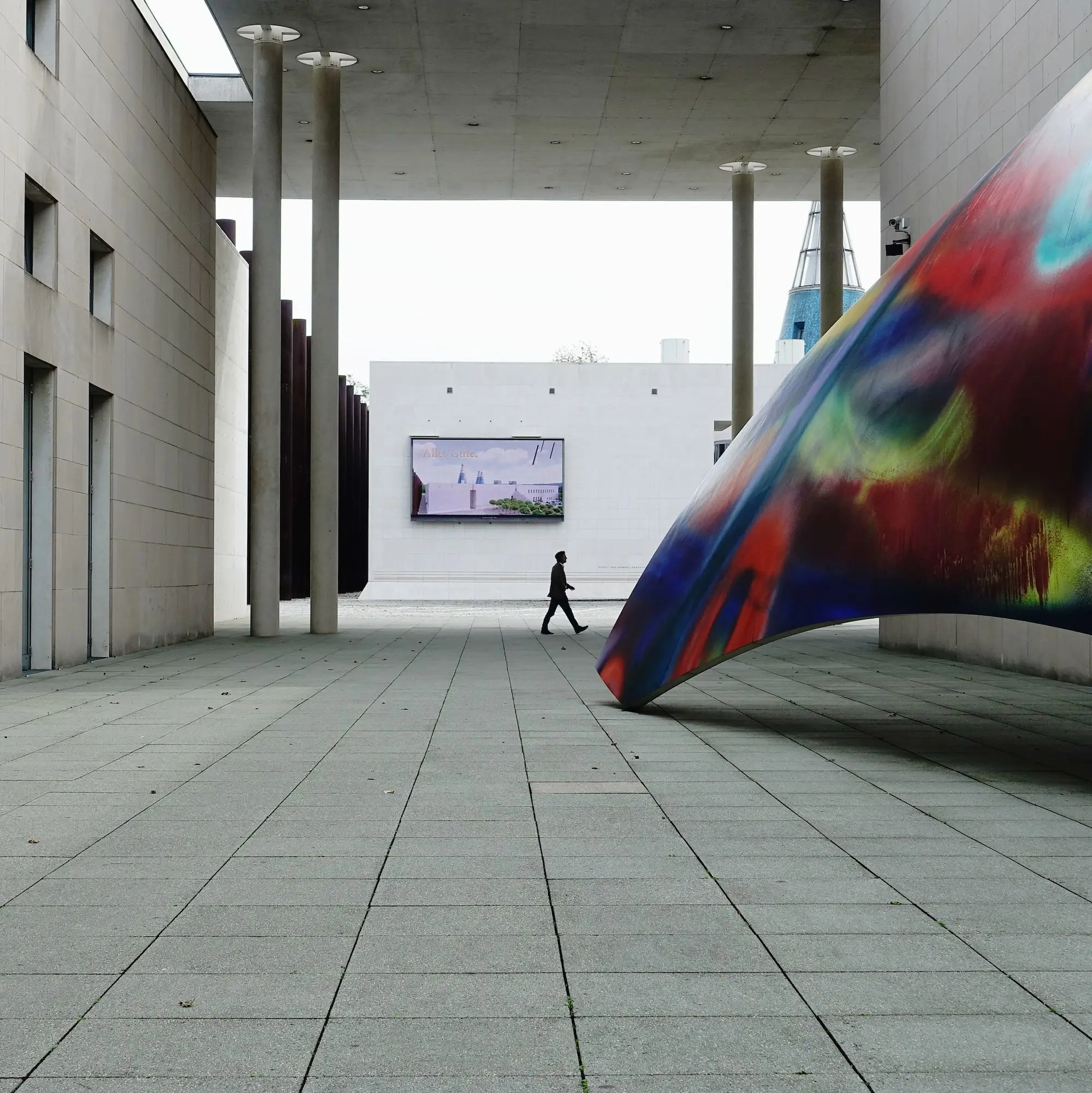
Kunstmuseum Bonn
Experience a unique gallery space filled with groundbreaking modern art.
Show More
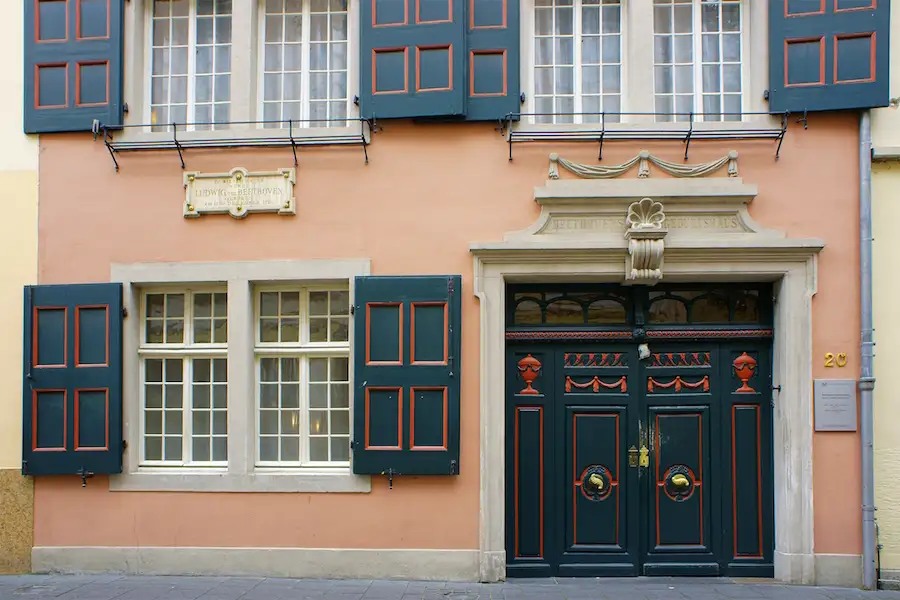
Beethoven-Haus
See the home where Ludwig van Beethoven was born in an attic room in 1770.
Show More
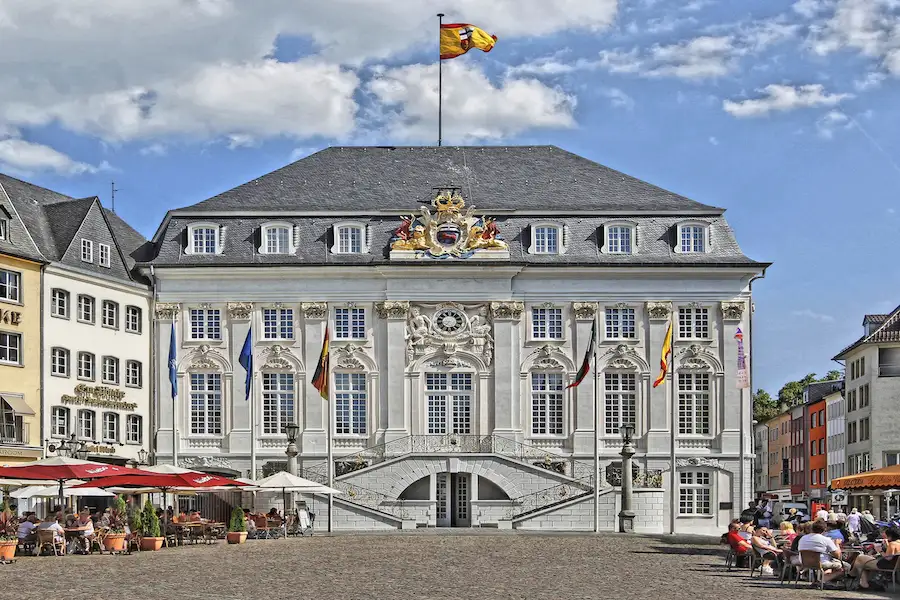
City Hall (Rathaus)
See one of the Bonn's liveliest squares in front of the historic town hall.
Show More

Haus der Geschichte
Take a trip back into the recent past and learn about the old West Germany.
Show More

Kunstmuseum Bonn
Experience a unique gallery space filled with groundbreaking modern art.
Show More

Beethoven-Haus
See the home where Ludwig van Beethoven was born in an attic room in 1770.
Show More

City Hall (Rathaus)
See one of the Bonn's liveliest squares in front of the historic town hall.
Show More
prev
next

Day 7
Cologne

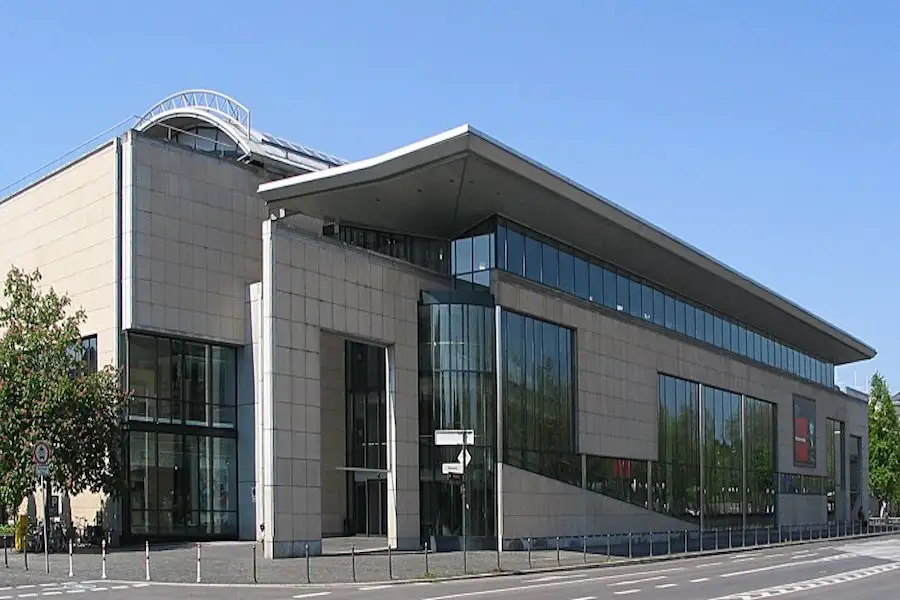
Haus der Geschichte
 Highlight of Bonn Excursion
Highlight of Bonn ExcursionTake a trip back into the recent past and learn about the old West Germany.
For modern history buffs, the Haus der Geschichte is a museum dedicated to the story of the German state since 1945, looking at the social and economic rebirth of a nation in ruins.

Kunstmuseum Bonn
 Highlight of Bonn Excursion
Highlight of Bonn ExcursionExperience a unique gallery space filled with groundbreaking modern art.
The Kunstmuseum is a splendid hub of German art, showcasing bright works by Rhineland expressionist August Macke, challenging pieces by abstract painter Ernst Wilhelm Nay, and slabs of contemporary colour by modernist Thomas Rentmeister. Its starkly beautiful modernist interior also contains a substantial collection of post-1945 German art.

Beethoven-Haus
 Highlight of Bonn Excursion
Highlight of Bonn ExcursionSee the home where Ludwig van Beethoven was born in an attic room in 1770.
Beethoven was born here thanks to his father's position as court musician with the Electorate of Cologne, whose capital Bonn was at the time. You'll see family portraits, pianos, Beethoven's death mask and ear trumpets, and the room he was born in. Other than the very creaky wood-floors, the museum is without listening stations as you'd expect, so you have to be a true Beethoven admirer to truly appreciate the exhibits by themselves. But thankfully there is music and his life story told on the audio guide, which we highly suggest if you want to get the most out of the museum.

City Hall (Rathaus)
 Highlight of Bonn Excursion
Highlight of Bonn ExcursionSee one of the Bonn's liveliest squares in front of the historic town hall.
The Bonn town hall is an attractive 18th century roccoco building. Visiting VIPs during the town's halycon days as federal capital, like Charles de Gaulle and John F. Kennedy, would roll out in front of the crowds on the Rathaus steps. Today the square in front of the town hall is filled with cafes and is a favorite gathering place for both locals and visitors.

Haus der Geschichte
 Highlight of Bonn Excursion
Highlight of Bonn ExcursionTake a trip back into the recent past and learn about the old West Germany.
For modern history buffs, the Haus der Geschichte is a museum dedicated to the story of the German state since 1945, looking at the social and economic rebirth of a nation in ruins.

Kunstmuseum Bonn
 Highlight of Bonn Excursion
Highlight of Bonn ExcursionExperience a unique gallery space filled with groundbreaking modern art.
The Kunstmuseum is a splendid hub of German art, showcasing bright works by Rhineland expressionist August Macke, challenging pieces by abstract painter Ernst Wilhelm Nay, and slabs of contemporary colour by modernist Thomas Rentmeister. Its starkly beautiful modernist interior also contains a substantial collection of post-1945 German art.

Beethoven-Haus
 Highlight of Bonn Excursion
Highlight of Bonn ExcursionSee the home where Ludwig van Beethoven was born in an attic room in 1770.
Beethoven was born here thanks to his father's position as court musician with the Electorate of Cologne, whose capital Bonn was at the time. You'll see family portraits, pianos, Beethoven's death mask and ear trumpets, and the room he was born in. Other than the very creaky wood-floors, the museum is without listening stations as you'd expect, so you have to be a true Beethoven admirer to truly appreciate the exhibits by themselves. But thankfully there is music and his life story told on the audio guide, which we highly suggest if you want to get the most out of the museum.

City Hall (Rathaus)
 Highlight of Bonn Excursion
Highlight of Bonn ExcursionSee one of the Bonn's liveliest squares in front of the historic town hall.
The Bonn town hall is an attractive 18th century roccoco building. Visiting VIPs during the town's halycon days as federal capital, like Charles de Gaulle and John F. Kennedy, would roll out in front of the crowds on the Rathaus steps. Today the square in front of the town hall is filled with cafes and is a favorite gathering place for both locals and visitors.
prev
next


Day 8
Cologne to Munich
Day 8
Cologne to Munich





7:45 AM
Taxi Dropoff at Rail Station
There are two main rail stations where visitors depart from Cologne. You will likely depart from the Cologne main station (Köln hbf, i.e hauptbahnhof), but be careful to check that you should not depart from the station Messe/Deutz, which is located just across the river. Before spending money on a transfer, be sure to check whether your hotel is within easy walking distance. Also consider that public transport is the cheapest and sometimes fastest option. If staying at a hotel, they can order a reliable taxi. Some private transfers will even help with your bags. Uber is also available for those with the app.

Day 8
Cologne to Munich


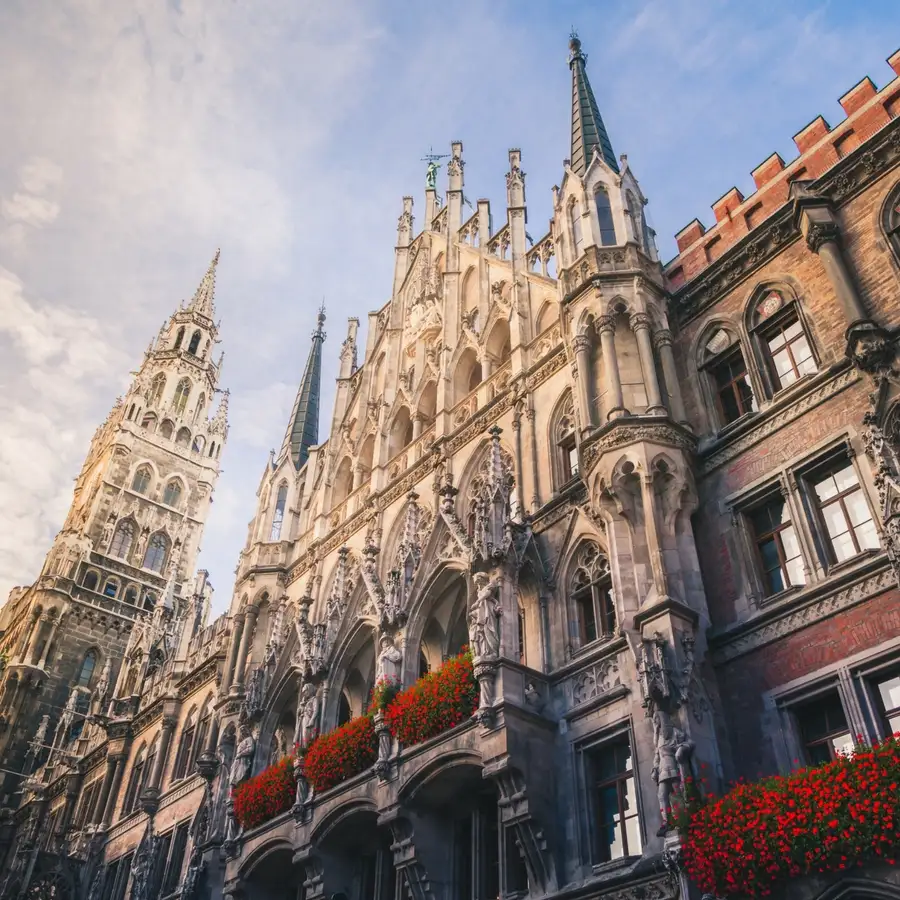
Day 9
Munich
Day 9
Munich




9:00 AM - 11:30 AM
Guided Walk Tour of Historic Munich
Munich contains many reminders of a long and varied history but also encompasses the modern features of a strong and vibrant city. The insights of a local help make sense of the traditions, trends, and promises of Bavaria's Capital - sometimes referred to as the city of laptops and lederhosen. On this tour, your guide will show you the highlights of Munich and point out the many hidden treasures.

Day 9
Munich



Day 10
Depart Munich
Day 10
Depart Munich

To Be Determined
Transfer to Airport
Munich has one main airport, Munich International Airport, where almost all visitors depart. The most affordable and often fastest way to reach the airport is by train. The "S-bahn" local trains takes 40 minutes and leaves directly from the main station in central Munich (München hbf). Other regional trains to the airport depart from other stations in Munich, so you may have an even better departure option near your hotel. Your hotel can arrange a reliable taxi or if you have the app, Uber is also a good option. You can also arrange a private transfer. If you are picked up about 3 hours before your departure time, you should arrive at the airport with a little over 2 hours to spare, depending on traffic. If you are leaving during rush hour, you may want to budget an extra fifteen to thirty minutes.

Day 10
Depart Munich


What's Included In Western European Highlights Trip

Pre-Paid Tours and Activities:
- Private Guided Walking Tour of the Center of Paris
- Privately Guided Walking Tour of Amsterdam
- Canal Cruise in Amsterdam
- Guided Walk Tour of Historic Munich
- City Cards for Munich and Cologne, including discounts to many popular attractions

Pre-Paid Transportation:
- 2nd Class Train Tickets from Paris Nord to Amsterdam Centraal
- 2nd Class Train Tickets from Amsterdam Centraal to Köln Messe/Deutz
- 2nd Class Train Tickets from Cologne-Munich
- Public Transport Tickets for Munich, Amsterdam, and Cologne

Accommodation:
- 3 nights at a hotel of your choice in Paris
- 2 nights at a hotel of your choice in Amsterdam
- 2 nights at a hotel of your choice in Cologne
- 2 nights at a hotel of your choice in Munich

Go Real Travel Mobile App:
- Itinerary Plan & Reservations Info
- Points of Interest
- Detailed Travel Information
- Maps & Directions
Other Trips You May Like

9 Days
From$2829USD

10 Days
From$2995USD

14 Days
From$4050USD
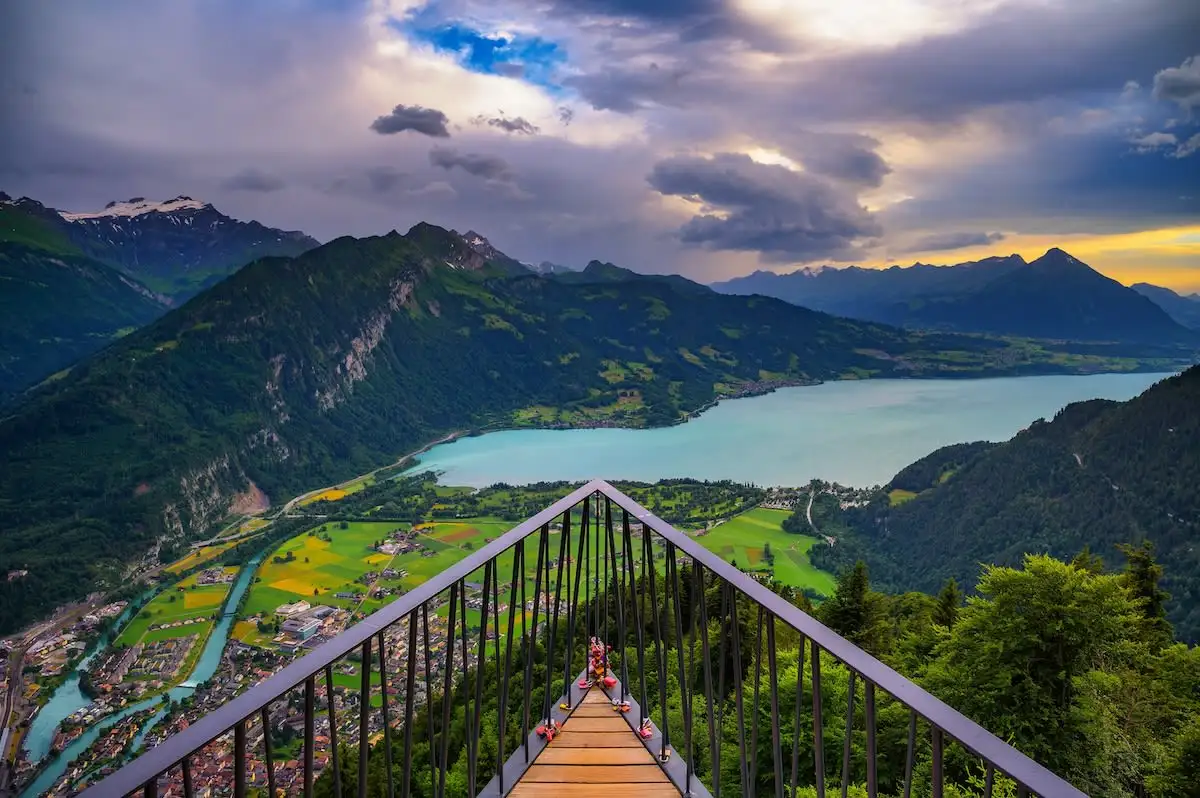
14 Days
From$4075USD
2-Weeks of Cultural, Gastronomic & Natural Wonders in Munich, Switzerland & Paris

Germany, Switzerland, France

17 Days
From$4530.9234235USD

21 Days
From$5199USD
Canals, Castles, and Culture: A Three-Week Journey in the Netherlands & Germany

Netherlands, Germany

10 Days
From$2980USD

13 Days
From$3699USD

14 Days
From$3895USD

9 Days
From$2829USD

10 Days
From$2995USD

14 Days
From$4050USD

14 Days
From$4075USD
2-Weeks of Cultural, Gastronomic & Natural Wonders in Munich, Switzerland & Paris

Germany, Switzerland, France

17 Days
From$4530.9234235USD

21 Days
From$5199USD
Canals, Castles, and Culture: A Three-Week Journey in the Netherlands & Germany

Netherlands, Germany

10 Days
From$2980USD

13 Days
From$3699USD

14 Days
From$3895USD
prev
next
Featured Blogs
prev
next
Our Customers Say It Best
Marianne Strydom, Paarl, South Africa
I just wanted to thank you for organizing an amazing trip for me – I packed in so much in such a short period of time and everything was just perfect. The way you do things makes it possible to really get to know the destination, which for me as a travel agent could not have been better. 

Otto Chuy, Los Angeles, California
I am still surprised how everything worked as planned, without a hitch. All instructions in your itinerary were precise and correct. Your suggestions and comments in each of the locations we went to were very helpful. All your guides, without exception, were wonderful and exactly on time. 

Malini Dutta, Boston, Massachusetts
We can't thank you enough for the detailed plans, maps, and suggestions. It really felt that someone was holding our hands and showing us around. We had all the excitement of discovering foreign lands, with none of the problems that can happen while negotiating unfamiliar places. In fact, all the cities felt like home within a few hours of arriving and exploring. 

Bev and Mark Frankel, Williamsburg, Virginia
We could not be more pleased with Go Real Travel! You took the guess work out of things like public transport but still managed to allow us the freedom to tour as we wanted. Our guides were exceptional and every time I saw a Viking Cruise tour of 25 people, I realized the quality experience we were getting with Go Real. 

Marianne Strydom, Paarl, South Africa
I just wanted to thank you for organizing an amazing trip for me – I packed in so much in such a short period of time and everything was just perfect. The way you do things makes it possible to really get to know the destination, which for me as a travel agent could not have been better. 

Otto Chuy, Los Angeles, California
I am still surprised how everything worked as planned, without a hitch. All instructions in your itinerary were precise and correct. Your suggestions and comments in each of the locations we went to were very helpful. All your guides, without exception, were wonderful and exactly on time. 

Malini Dutta, Boston, Massachusetts
We can't thank you enough for the detailed plans, maps, and suggestions. It really felt that someone was holding our hands and showing us around. We had all the excitement of discovering foreign lands, with none of the problems that can happen while negotiating unfamiliar places. In fact, all the cities felt like home within a few hours of arriving and exploring. 

Bev and Mark Frankel, Williamsburg, Virginia
We could not be more pleased with Go Real Travel! You took the guess work out of things like public transport but still managed to allow us the freedom to tour as we wanted. Our guides were exceptional and every time I saw a Viking Cruise tour of 25 people, I realized the quality experience we were getting with Go Real. 



Explore cities in more detail
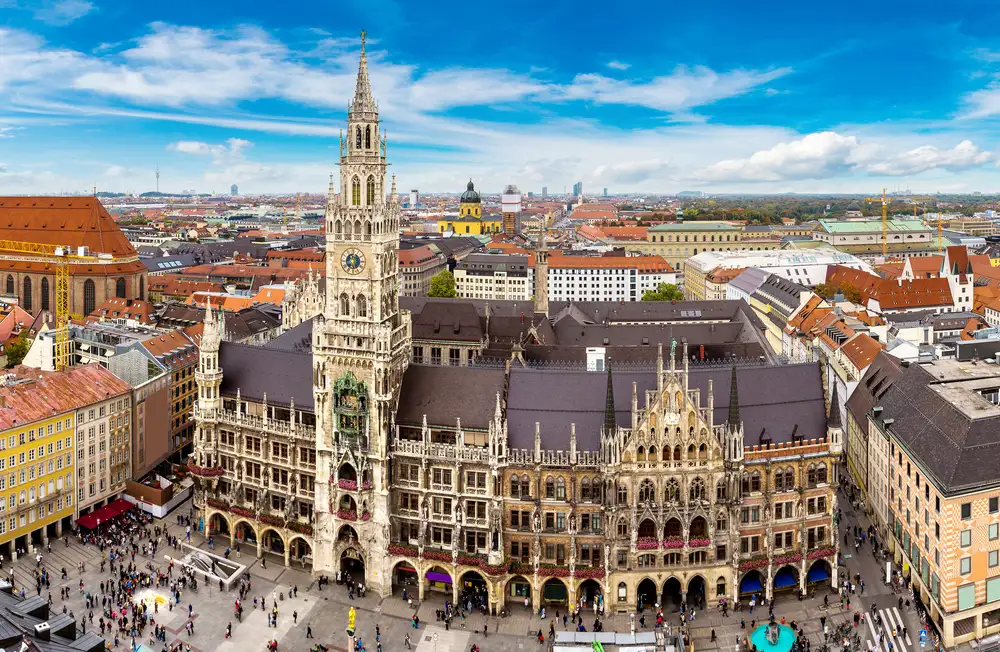
Munich
Arriving in Munich, you would be forgiven for thinking you were on the set of a movie about old Bavaria. At the Old Town beer halls, barmaids laced in dirndl dresses serve up frosty Helles lager, as oom-pah music drifts across the Marienplatz square. Men in lederhosen and checked shirts merrily give toasts as they knock glasses, or steins, as they’re known here. They sit at tables laden with wurst sausage and giant pretzels oozing with herby butter. This is Germany’s Germany, a place where folk traditions never stopped, and the revelry doesn’t either. Even when it isn’t Oktoberfest, the town’s notorious beer-drinking celebration, Munich is always happy to show you a good time. Simply cast your eyes around the lavish, gilded banquet hall at the Munich Residenz, the 13th-century Wittelsbach palace. You’ll see Munich has been impressing guests for centuries. Or, swing by the BMW Museum and check out the classic German cars. They even let you sit inside to test out the new models. At the city’s English Gardens, surfers ride waves on one of the park’s rivers. Munich is filled to the brim with this kind of pure-hearted German fun.

Learn About Munich
Build Munich Trip
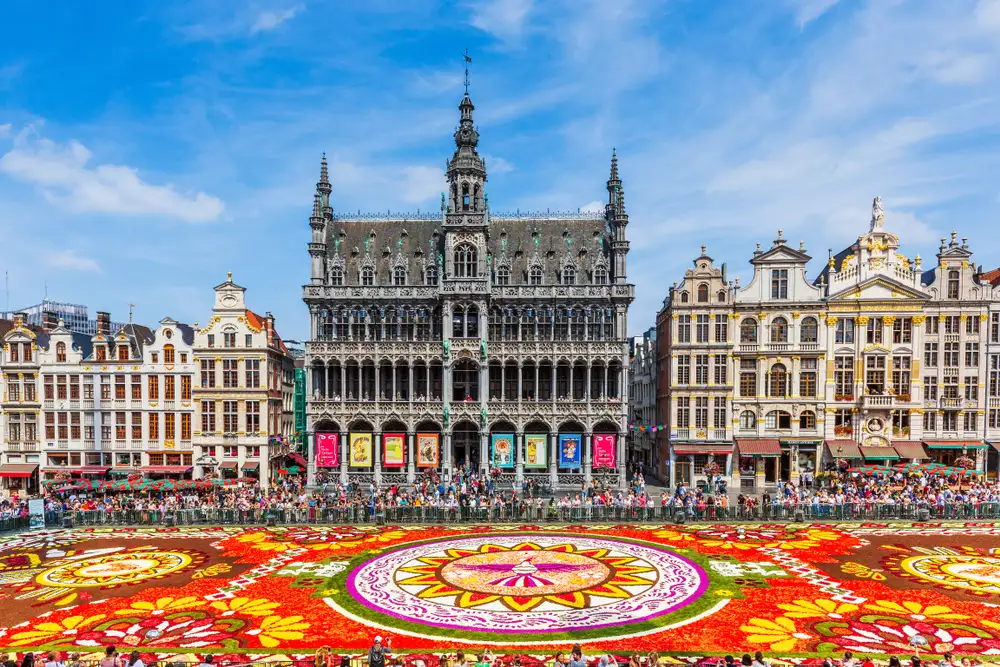
Brussels
It feels as though everything in Brussels is tinted with gold. From the gilded rooftops of the old houses on the Grand Palace to the foil-wrapped bonbons piled in chocolatier windows, Brussels seems to sparkle and wink at you around every corner. Aside from the lustrous architecture and Trappist ales, this shiny city is probably still best known for its iconic street food options: salty, golden fries, and fluffy, honey-colored waffles. While a major political center, home of the EU and NATO, don’t be fooled by Brussels stern ‘Eurocratic’ facade. Brussels revels in cheeky humor and mischief. So much so, Brussel’s beloved mascot, the ‘Manneken Pis’, is a statue of a small child urinating into a fountain. The city takes great pleasure in dressing this statue in festive-themed costumes. It’s no surprise that the artist Magritte, one of the great visual tricksters of the 20th century, called Brussels home. After a few days exploring the city, and taking in its sights and scenes, you’re sure to come away smiling.

Learn About Brussels
Build Brussels Trip

Bayeux
Bayeux is an old, well-preserved town in Normandy. Most known as the backdrop for the Battle of Normandy, visitors who descend from WWII veterans often feel a special, somber connection to this part of France. On June 6, 1944, otherwise known as ‘D-Day’, thousands of Allied troops landed on Normandy’s Atlantic Coast, with a mission to drive out the German occupying forces. More than 120,000 Allied soldiers died in combat over the next three months. Although victorious, the campaign for Normandy caused the highest number of losses for America in all of WWII. A landscape of remembrance, on a tour of the Norman countryside you’ll see the remains of tanks, aircraft, and military bunkers. Special cemeteries and memorials in the area pay tribute to the sacrifice of fallen soldiers. Despite the destruction of nearly every neighboring village, the town of Bayeux endured WWII unscathed. Along with all its medieval architecture, the town’s most precious treasure, the Bayeux Tapestry, was miraculously spared. Stitched in the 11th century, the Tapestry tells the story of William the Conqueror’s invasion of England in 1066. As you view the tapestry and stroll through the charming streets of Bayeux, the sweeping cathedral spires and gently flowing River Aure cast you back to another time. A landscape of war, but also remembrance, a trip to Bayeux and Normandy will deepen your appreciation and respect for the past.

Learn About Bayeux
Build Bayeux Trip
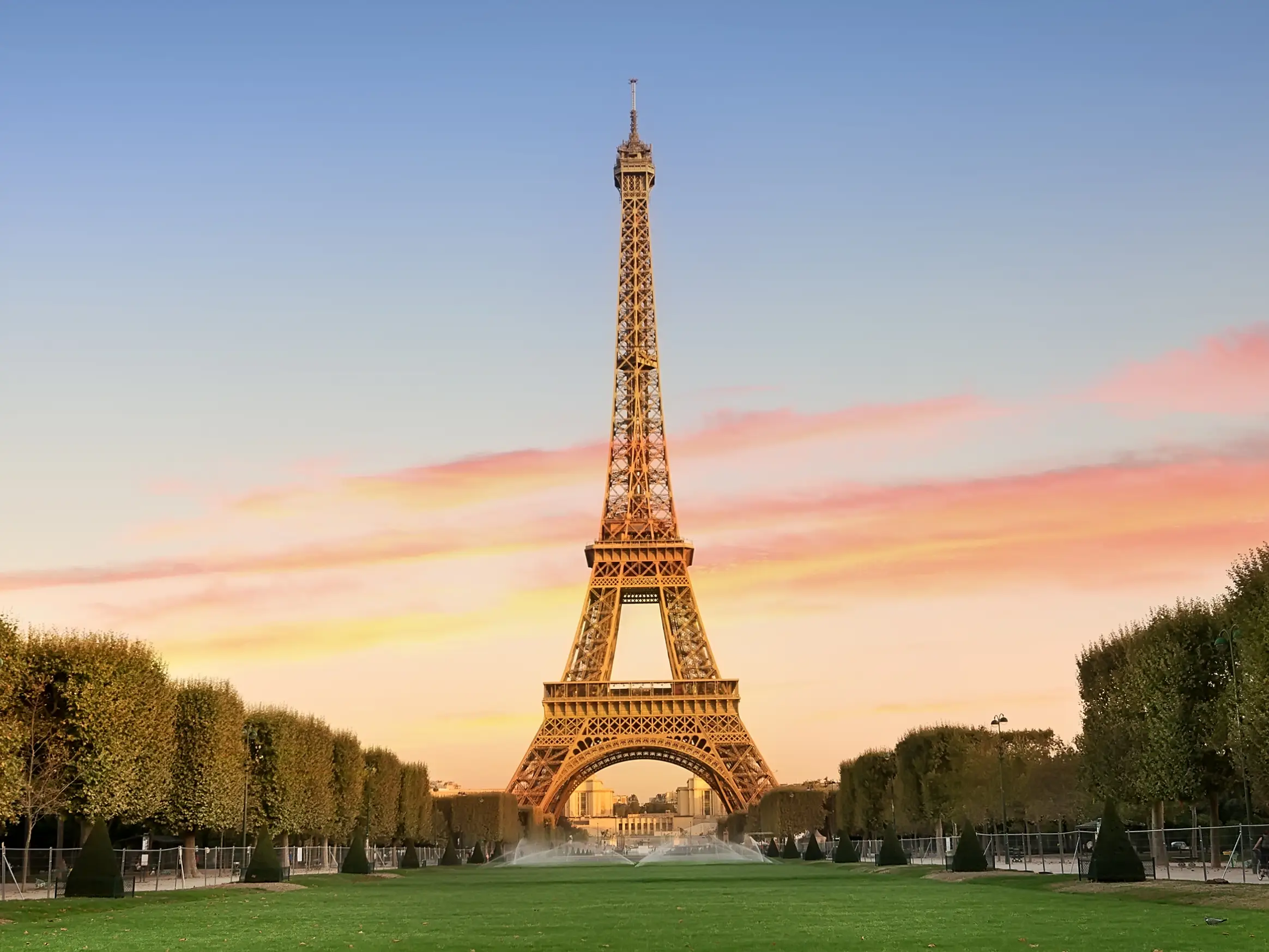
Paris
The magic of Paris is undeniable. This is the most romantic destination in Europe, and surely the number one bucket list destination of all time. If you want to say you've traveled, you have to visit Paris at least once. Along with classic must-sees like the Eiffel Tower and the Sacre-Coeur, there is so much to see and do in Paris that it helps to narrow it down by interest. Fashion and shopping enthusiast? Look no further than the Galeries Lafayette, Avenue des Champs-Élysées, or the Marais. Art aficionado? Once you're done with the Louvre, make a start on the Musée d'Orsay. History buffs won't be able to walk a block without uncovering a monument to Napoleon or Louis XIV. If you visit Paris with a foodie, be warned — you'll gaze in a lot of patisserie windows, and sample your weight in croissants. Because Paris always has so much on offer, it never grows old. At dusk, as you stroll the wide boulevards past Haussmann apartment buildings and sharply dressed Parisians, or gaze down at the city from the hill at Montmarte, you might find yourself saying 'Paris Je t' aime'. This is, after all, the City of Love.

Learn About Paris
Build Paris Trip
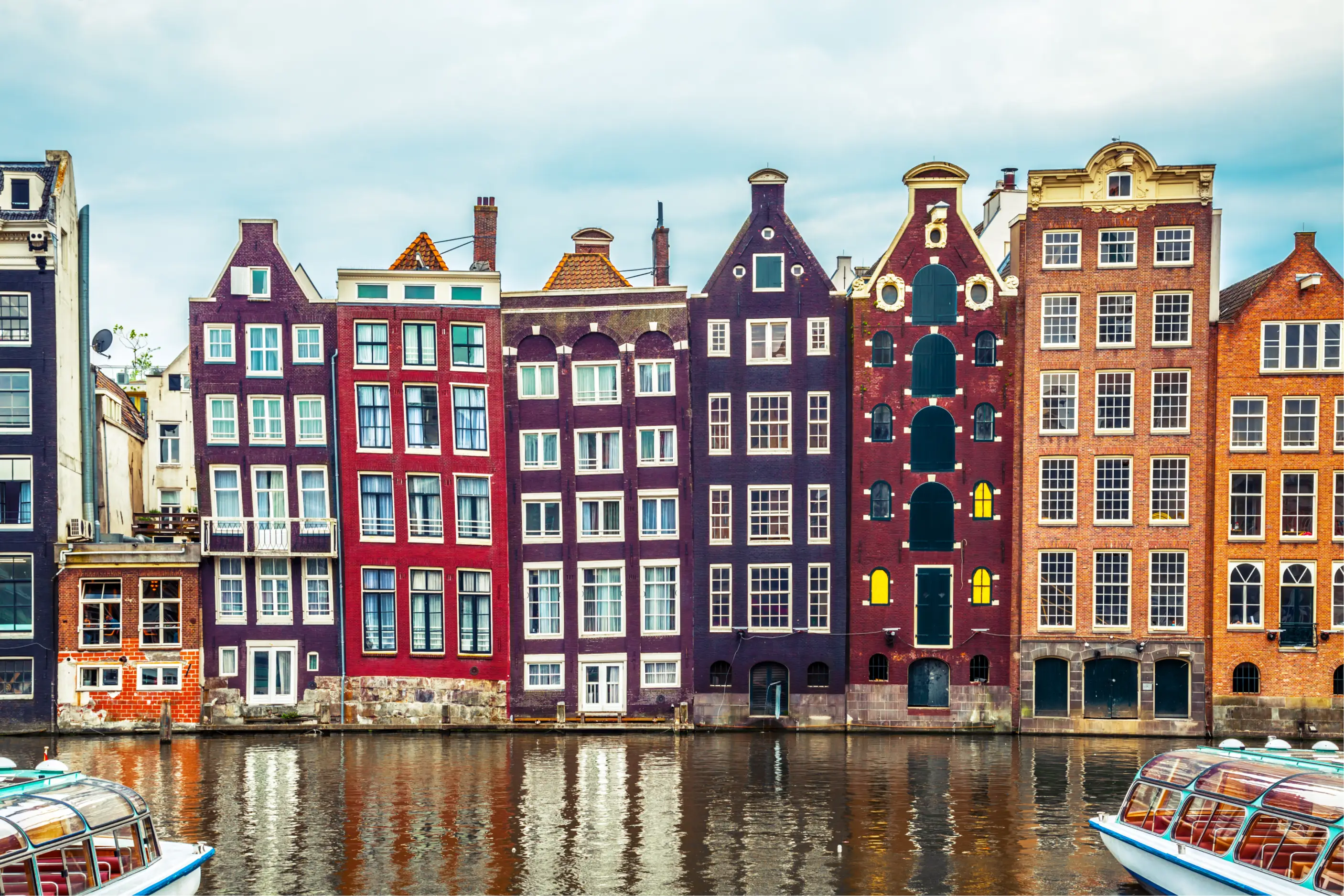
Amsterdam
A waterside metropolis with a low-key vibe, a visit to Amsterdam is as fun and freewheeling as a fixed-gear bicycle. This is the city where you can let it all go. The streets of Amsterdam chime with bicycle bells and the laughter of people making their way between bars. Yellow wheels of cheese line shop windows, and in springtime, market stalls are abundant with the famous Dutch tulips. Younger than other cities in the Netherlands, Amsterdam sprang to life in the 17th century, when it became flush with trade from the Dutch colonies. From the gable tipped houses standing shoulder-to-shoulder on the canals to the Rembrandt paintings hanging on the walls of the Rijksmuseum, Amsterdam is strewn with relics from the Dutch Golden Age. Whether you rent a bicycle, float down a canal, or just sip on an amber-colored lager and watch the world go by, Amsterdam makes a lasting impression from start to finish.

Learn About Amsterdam
Build Amsterdam Trip
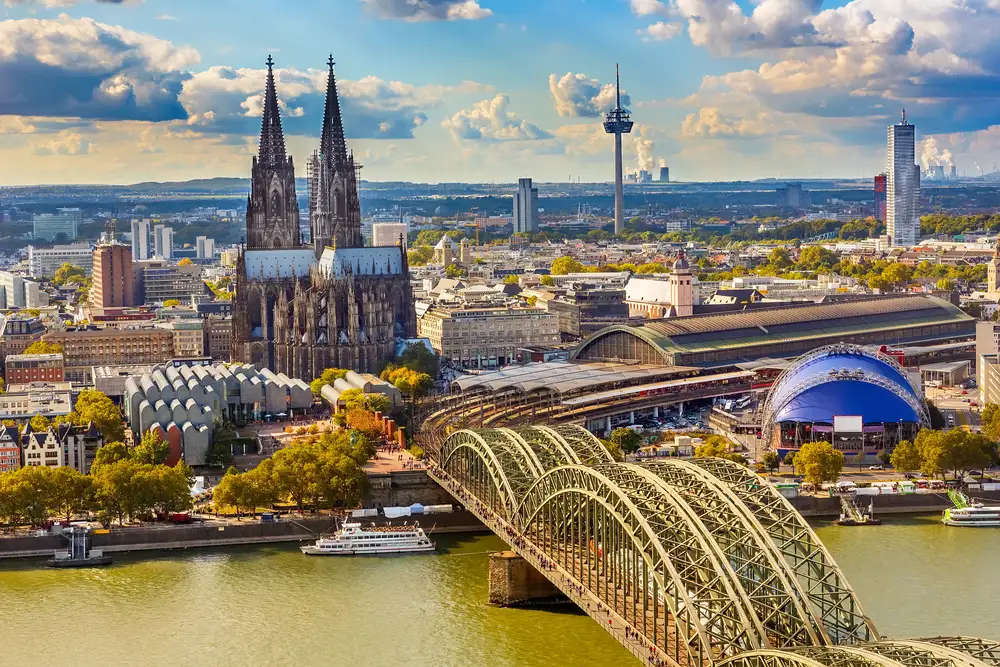
Cologne
As you travel through Western Germany, Cologne is a cheerful, fun city to stop for a night or two. Flanking both sides of the Rhine river, Cologne's delightful architectural pastiche reflects the breezy anything-goes attitude of its inhabitants. Like most German cities, Cologne took a hit during WWII, losing some of its old-world buildings and neighborhoods. However, thanks to the endurance of the Cologne Cathedral and iconic Hohenzollern Bridge, the city has kept its identity close to hand. Sometimes quite literally in the form of a glass of sparkling Kölsch local beer. A visit to Cologne should always include paying a call to its eponymous Cathedral. A sensational, Gothic behemoth of a building and a UNESCO Heritage Site, Cologne Cathedral will get you right in the heart, humbling all who enter it. Just outside the cathedral, the Hohenzollern Bridge spans the Rhine, with three iron truss arches looping over the river like the bounces of a skimming stone. After wandering the riverside, if you're looking for some indulgence, Cologne's Chocolate Museum is an eternally popular choice. Maybe you'll be under the influence of the cocoa, but at the end of a day in Cologne, life can seem pretty sweet.

Learn About Cologne
Build Cologne Trip

Munich
Arriving in Munich, you would be forgiven for thinking you were on the set of a movie about old Bavaria. At the Old Town beer halls, barmaids laced in dirndl dresses serve up frosty Helles lager, as oom-pah music drifts across the Marienplatz square. Men in lederhosen and checked shirts merrily give toasts as they knock glasses, or steins, as they’re known here. They sit at tables laden with wurst sausage and giant pretzels oozing with herby butter. This is Germany’s Germany, a place where folk traditions never stopped, and the revelry doesn’t either. Even when it isn’t Oktoberfest, the town’s notorious beer-drinking celebration, Munich is always happy to show you a good time. Simply cast your eyes around the lavish, gilded banquet hall at the Munich Residenz, the 13th-century Wittelsbach palace. You’ll see Munich has been impressing guests for centuries. Or, swing by the BMW Museum and check out the classic German cars. They even let you sit inside to test out the new models. At the city’s English Gardens, surfers ride waves on one of the park’s rivers. Munich is filled to the brim with this kind of pure-hearted German fun.

Learn About Munich
Build Munich Trip

Brussels
It feels as though everything in Brussels is tinted with gold. From the gilded rooftops of the old houses on the Grand Palace to the foil-wrapped bonbons piled in chocolatier windows, Brussels seems to sparkle and wink at you around every corner. Aside from the lustrous architecture and Trappist ales, this shiny city is probably still best known for its iconic street food options: salty, golden fries, and fluffy, honey-colored waffles. While a major political center, home of the EU and NATO, don’t be fooled by Brussels stern ‘Eurocratic’ facade. Brussels revels in cheeky humor and mischief. So much so, Brussel’s beloved mascot, the ‘Manneken Pis’, is a statue of a small child urinating into a fountain. The city takes great pleasure in dressing this statue in festive-themed costumes. It’s no surprise that the artist Magritte, one of the great visual tricksters of the 20th century, called Brussels home. After a few days exploring the city, and taking in its sights and scenes, you’re sure to come away smiling.

Learn About Brussels
Build Brussels Trip

Bayeux
Bayeux is an old, well-preserved town in Normandy. Most known as the backdrop for the Battle of Normandy, visitors who descend from WWII veterans often feel a special, somber connection to this part of France. On June 6, 1944, otherwise known as ‘D-Day’, thousands of Allied troops landed on Normandy’s Atlantic Coast, with a mission to drive out the German occupying forces. More than 120,000 Allied soldiers died in combat over the next three months. Although victorious, the campaign for Normandy caused the highest number of losses for America in all of WWII. A landscape of remembrance, on a tour of the Norman countryside you’ll see the remains of tanks, aircraft, and military bunkers. Special cemeteries and memorials in the area pay tribute to the sacrifice of fallen soldiers. Despite the destruction of nearly every neighboring village, the town of Bayeux endured WWII unscathed. Along with all its medieval architecture, the town’s most precious treasure, the Bayeux Tapestry, was miraculously spared. Stitched in the 11th century, the Tapestry tells the story of William the Conqueror’s invasion of England in 1066. As you view the tapestry and stroll through the charming streets of Bayeux, the sweeping cathedral spires and gently flowing River Aure cast you back to another time. A landscape of war, but also remembrance, a trip to Bayeux and Normandy will deepen your appreciation and respect for the past.

Learn About Bayeux
Build Bayeux Trip

Paris
The magic of Paris is undeniable. This is the most romantic destination in Europe, and surely the number one bucket list destination of all time. If you want to say you've traveled, you have to visit Paris at least once. Along with classic must-sees like the Eiffel Tower and the Sacre-Coeur, there is so much to see and do in Paris that it helps to narrow it down by interest. Fashion and shopping enthusiast? Look no further than the Galeries Lafayette, Avenue des Champs-Élysées, or the Marais. Art aficionado? Once you're done with the Louvre, make a start on the Musée d'Orsay. History buffs won't be able to walk a block without uncovering a monument to Napoleon or Louis XIV. If you visit Paris with a foodie, be warned — you'll gaze in a lot of patisserie windows, and sample your weight in croissants. Because Paris always has so much on offer, it never grows old. At dusk, as you stroll the wide boulevards past Haussmann apartment buildings and sharply dressed Parisians, or gaze down at the city from the hill at Montmarte, you might find yourself saying 'Paris Je t' aime'. This is, after all, the City of Love.

Learn About Paris
Build Paris Trip

Amsterdam
A waterside metropolis with a low-key vibe, a visit to Amsterdam is as fun and freewheeling as a fixed-gear bicycle. This is the city where you can let it all go. The streets of Amsterdam chime with bicycle bells and the laughter of people making their way between bars. Yellow wheels of cheese line shop windows, and in springtime, market stalls are abundant with the famous Dutch tulips. Younger than other cities in the Netherlands, Amsterdam sprang to life in the 17th century, when it became flush with trade from the Dutch colonies. From the gable tipped houses standing shoulder-to-shoulder on the canals to the Rembrandt paintings hanging on the walls of the Rijksmuseum, Amsterdam is strewn with relics from the Dutch Golden Age. Whether you rent a bicycle, float down a canal, or just sip on an amber-colored lager and watch the world go by, Amsterdam makes a lasting impression from start to finish.

Learn About Amsterdam
Build Amsterdam Trip

Cologne
As you travel through Western Germany, Cologne is a cheerful, fun city to stop for a night or two. Flanking both sides of the Rhine river, Cologne's delightful architectural pastiche reflects the breezy anything-goes attitude of its inhabitants. Like most German cities, Cologne took a hit during WWII, losing some of its old-world buildings and neighborhoods. However, thanks to the endurance of the Cologne Cathedral and iconic Hohenzollern Bridge, the city has kept its identity close to hand. Sometimes quite literally in the form of a glass of sparkling Kölsch local beer. A visit to Cologne should always include paying a call to its eponymous Cathedral. A sensational, Gothic behemoth of a building and a UNESCO Heritage Site, Cologne Cathedral will get you right in the heart, humbling all who enter it. Just outside the cathedral, the Hohenzollern Bridge spans the Rhine, with three iron truss arches looping over the river like the bounces of a skimming stone. After wandering the riverside, if you're looking for some indulgence, Cologne's Chocolate Museum is an eternally popular choice. Maybe you'll be under the influence of the cocoa, but at the end of a day in Cologne, life can seem pretty sweet.

Learn About Cologne
Build Cologne Trip
prev
next


 Map of Your Itinerary Route
Map of Your Itinerary Route
Zoom In to the cities to see your itinerary in more detail


 4.8
4.8 